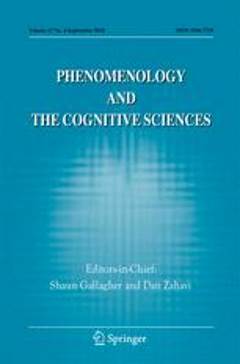Repository | Journal | Volume | Article
The swaying form
imagination, metaphor, embodiment
pp. 27-53
Abstract
How is it that metaphors are meaningful, yet we have so much trouble saying exactly what they mean? I argue that metaphoric thought is an act of imagination, mediated by the contingent form of human embodiment. Metaphoric cognition is an example of the productive interplay between intentional imagery and the body scheme, a process of imaginal modeling. The case of metaphor marks the intersection of linguistic and psychological processes and demonstrates the need for a multi-disciplinary approach not only in philosophy of language, but in cognitive science and consciousness studies as well.
Publication details
Published in:
(2003) Phenomenology and the Cognitive Sciences 2 (1).
Pages: 27-53
Full citation:
Neisser Joseph U. (2003) „The swaying form: imagination, metaphor, embodiment“. Phenomenology and the Cognitive Sciences 2 (1), 27–53.




